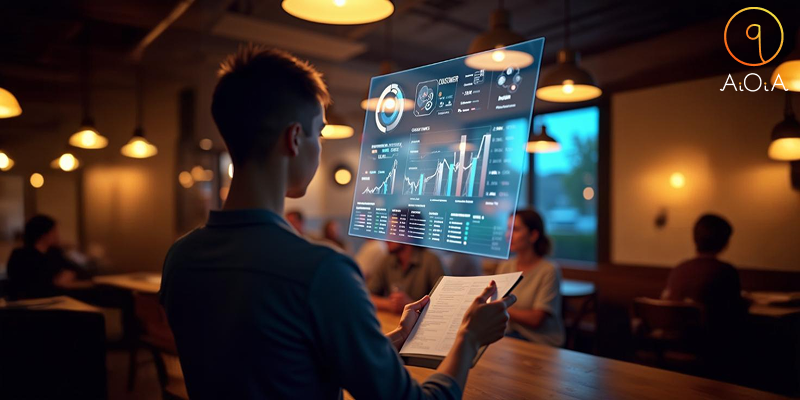
In today’s highly competitive restaurant industry, guest experience is everything. Guests have higher standards than ever and giving excellent service is no longer just a nicety – it’s a necessity. One strong tool that restaurants can harness to improve their guest experience is restaurant data analytics.
With the right insights, restaurant owners and managers can not only improve operations but also create unique experiences that will have guests coming back for more. In this blog, we’ll look into how analytics in restaurants can boost guest satisfaction and improve total service, driving both trust and income.
One of the most important benefits of restaurant data analytics is the ability to change each guest’s experience. By watching customer preferences and behaviors, restaurants can gather detailed insights into their guests’ tastes, eating habits, and even the times they prefer to visit. This data can help restaurants offer unique ideas, and special deals or even change food to meet specific needs.
For example, if a guest regularly gets a veggie meal, the system can offer new plant-based options on the menu. Or, if a customer always gets a certain drink with their food, a restaurant could offer a special deal for that drink when they return. Personalized experiences make guests feel valuable and understood, and this personal touch often leads to better satisfaction and trust.
Analyzing sales data and customer reviews can show which food items are working well and which ones are going flat. Data analytics can help restaurants spot trends and make changes to their offers properly. For instance, if a particular dish is regularly a hit, it could be recognized as a signature item or even marketed more aggressively.
On the other hand, bad menu items can be changed or removed to make space for new and exciting choices. By utilizing restaurant data analytics, owners and managers can streamline their food choices to match more closely with guest tastes, leading to better happiness and increased sales.
Behind every great guest experience is a well-trained, efficient team. Data analytics can be used to track the success of staff members, from wait times to order accuracy. This helps restaurants to spot areas for growth and optimize staffing levels during busy times.
For example, if data shows that waiters tend to take longer to attend to guests during specific hours, management can change plans to ensure there are more staff available at busy times.
Additionally, studying guest feedback on service quality can show areas where staff training is needed. With better training and hiring efficiency, restaurants can speed up service, reduce wait times, and eventually enhance the overall guest experience.
With data analytics, restaurants can predict trends and customer habits before they even happen. By studying past eating patterns and yearly trends, restaurants can better predict busy times, such as holidays or special events, and prepare accordingly.
For example, suppose data shows an increase in demand for certain menu items during the summer months. In that case, restaurants can plan by raising supplies or starting tailored discounts to take advantage of this trend.
Predictive analytics can also help restaurants better understand customer tastes, allowing them to change to shifts in taste. This proactive approach to customer service and menu planning can help restaurants stay ahead of the competition and continually offer the best experience for their guests.
Customer feedback is an important part of improving the guest experience but receiving and acting on this feedback can sometimes be a challenge. By adopting a thorough data analytics system, restaurants can receive guest feedback in real-time, whether through online reviews, polls, or in-house comment cards. Analyzing this data allows restaurants to quickly spot any pain points or places where the guest experience could be better.
For example, if multiple guests note that the wait for their food is too long, the restaurant can address the problem quickly by improving cooking operations. If customers show unhappiness with a specific food, cooks can change the recipe or offer an option. By reacting quickly to customer comments, restaurants show that they value their guests’ views and are dedicated to better their experience.
Data analytics also plays a crucial role in improving business savings. By studying key measures like product turnover, order accuracy, and food waste, restaurants can find areas where they can reduce costs without affecting the guest experience.
For example, if data shows that certain products are regularly overstocked and often go to waste, restaurants can change their buying process to avoid extra.
Moreover, by studying busy hours and table change rates, restaurants can make better choices about hiring, product management, and marketing. This not only improves revenue but also ensures that the restaurant runs easily, making it easier to keep high levels of service.
Loyalty programs are a great way to keep people going back, but only if they’re changed to the guest's wants and likes. With restaurant data analytics, restaurants can build reward programs that offer perks based on individual eating habits, such as frequent trips or buying trends. This data helps restaurants to change awards and make them more appealing for guests, raising the chance of return trips.
For instance, if a guest frequently gets dessert, the reward program might offer a free dessert on their next visit. Or, if a customer spends a birthday at the restaurant, the system can give them a unique birthday message along with a special discount or free item. Personalizing membership awards improves the connection between the restaurant and its guests, creating a stronger feeling of allegiance.
AiOiA is a new platform created to bridge the gap between customers and service providers, giving a simple, all-in-one solution for easing guest bookings, plans, and meetings. With features such as real-time service availability, easy ticket management, and personalized customer experiences, AiOiA helps restaurants provide faster and more efficient services to their guests.
By adding AiOiA into your restaurant’s processes, you can further enhance your guest experience improvement efforts through its data-driven tools. With AiOiA, restaurants can track guest tastes, improve staff plans, and gather useful feedback, all in one place. This allows for faster changes and more personalized service, ensuring that every guest is happy and eager to return.
Whether you’re looking to reduce wait times, improve service quality, or gain useful insights into guest behavior, AiOiA is the perfect tool to take your restaurant’s guest experience to the next level.
Data analytics has changed the way restaurants handle guest service. By tapping insights from customer habits, sales data, and comments, restaurants can fine-tune every part of the guest experience, from personalized suggestions to efficient service and organized operations.
Ready to take your restaurant’s guest experience to the next level? Explore AiOiA today and see how data-driven solutions can change your business.
.png)
